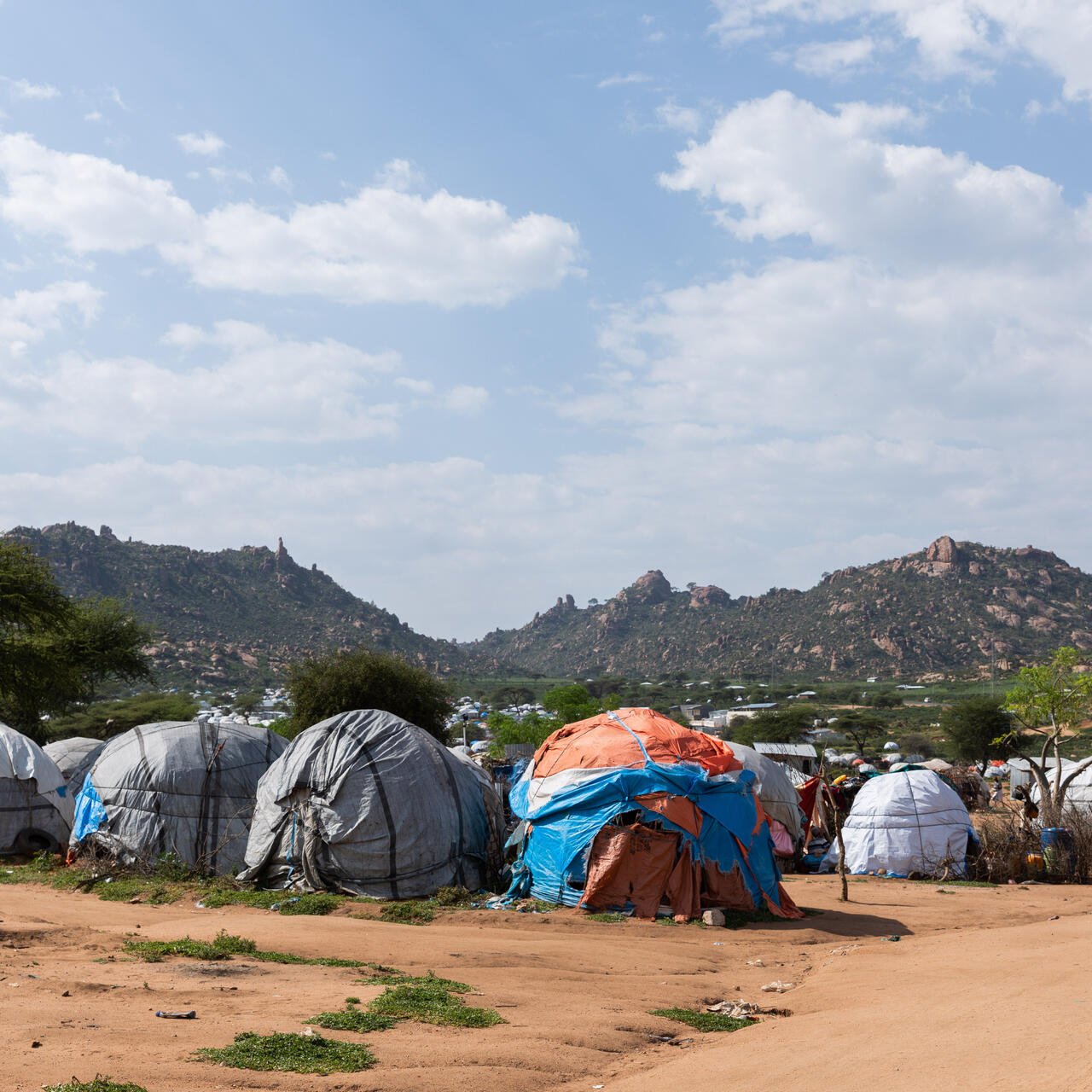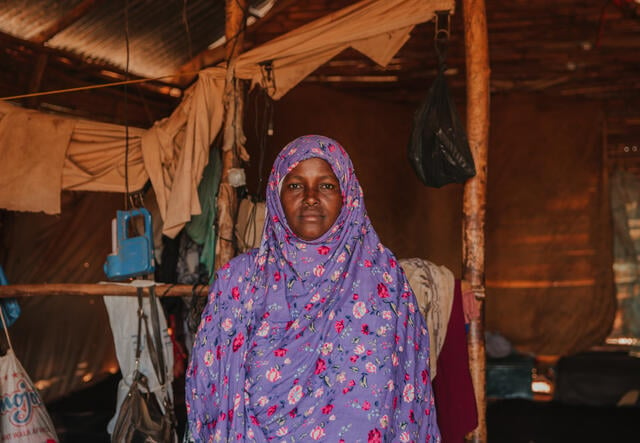
Crisis in Ethiopia: Climate change meets conflict
Here are five reasons the International Rescue Committee’s Emergency Watchlist ranks Ethiopia as the country, after Afghanistan, most at risk of worsening humanitarian crisis in 2022.

Here are five reasons the International Rescue Committee’s Emergency Watchlist ranks Ethiopia as the country, after Afghanistan, most at risk of worsening humanitarian crisis in 2022.
Update—July 19, 2022: With a catastrophic famine looming on the horizon across East Africa, the International Rescue Committee (IRC) has released its first ever Crisis Alert update to its annual Emergency Watchlist today, highlighting that over 3 million people could die without urgent international funding. Learn more about the famine threat.
Ethiopia rose into the Watchlist Top 5 last year as conflict escalated in the northern Tigray region. A year later, the risk of drought due to the “La Niña” effect, combined with continuing conflict in Tigray and the neighboring Amhara and Afar regions, are pushing the country even further up the list—to number 2. Here's what you need to know about the growing humanitarian crisis in Ethiopia.
Conflict broke out between the federal government and the Tigray People’s Liberation Front (TPLF) in November 2020. Since then, there have been several rounds of fighting. In June 2021 the federal government declared a “unilateral ceasefire,” but this has not brought an end to the conflict. Instead, fighting continues to affect parts of Tigray, Amhara and Afar.
The United States has claimed that 900,000 people are facing famine conditions in Tigray, although these figures cannot be verified due to restrictions on humanitarian access. What can be said with more certainty is that Ethiopia is highly exposed to the impacts of climate change, which is causing increasingly frequent and severe drought and flooding that are likely to drive up needs for millions across the country.
Conflict in northern Ethiopia has led over 2 million people to be displaced and left millions in need of humanitarian assistance.
Conflict in northern Ethiopia has led over 2 million people to be displaced and left millions in need of humanitarian assistance,” says Madiha Raza, the IRC’s senior global communications officer for Africa and Yemen. “Coupled with weather shocks, COVID-19, no end in sight for the conflict and insufficient humanitarian access, millions of people will fall into further need if the crisis continues unabated.

Scientists have warned that the March-to-May rainy season is likely to be poor in 2022, due to the weather phenomenon known as “La Niña.” The event compounds risk in a country where IRC teams report that climate change is causing more frequent flooding and drought. Flooding affected 617,000 people in mid-2021 and caused large-scale losses of livestock and crops. Droughts can have a similarly serious impact, driving food insecurity and pushing people to urban areas for work.
In mid-2021 Ethiopia's ministry of health reported a third wave of transmission in the country, with over 6,700 confirmed deaths since the start of the pandemic at time of writing. Early in the pandemic, efforts to contain the virus had a major impact in driving up need, as people were unable to go to work. More recently, the World Bank has said that Ethiopia’s economy is starting to recover from the impacts of the pandemic. However, just 1.2% of the population has been fully vaccinated, suggesting this recovery could falter if there are subsequent waves of transmission in the country.
There are now 5.5 million people in northern Ethiopia facing acute food insecurity and 63,000 people have sought refuge in Sudan. The United Nations has also said that 450,000 people have been displaced in Amhara and Afar as the conflict spreads. Until there is peace in northern Ethiopia, needs will continue to grow. Moreover, conflict affects other regions like Oromia—where the U.N. has warned there are over 100,000 people displaced by conflict. Tensions with Sudan over the Grand Ethiopian Renaissance Dam and the continued presence of Ethiopian communities in Sudan’s border area of al-Fashaqa could spark border tensions as well.
The Ethiopian ministry of peace has described plans to deliver aid in Tigray as “impeded,” citing shortages of trucks to carry supplies, while the U.N. considers much of northern Ethiopia as “hard to reach” or “partially accessible.” Regardless of the causes of these constraints, their impacts are clear. In October 2021, the U.N. said five of the seven main partner agencies working in Tigray had temporarily been forced to suspend food deliveries due to shortages of fuel. Access constraints also mean that the humanitarian community does not have clarity about the precise food insecurity situation in northern Ethiopia, although the U.S. has said it believes 900,000 people are living in famine conditions.
The largest refugee populations are from South Sudan (380,000), Somalia (217,000), Eritrea (155,000), Sudan (47,000) and Yemen (2,500)—all of which (apart from Eritrea) are on Watchlist 2022, indicating a risk of renewed population movements into Ethiopia over the coming year.
Read more about the top 10 crises the world can’t ignore in 2022, learn how the IRC selected these countries, and download the full 2022 Emergency Watchlist report for data citations and profiles of all 20 crisis countries on the IRC's list.
In strong partnership with local nonprofit organizations, we distribute cash and basic emergency supplies, including for women and girls, and build and maintain safe water supply systems and sanitation facilities. The IRC also supports government partners and community workers in primary health care clinics, constructs classrooms and trains teachers, and provides livelihoods-related training and job opportunities to youth and at-risk households.
Learn more about the IRC’s Ethiopia response.
Donate now to support the IRC's life-changing work in Ethiopia and worldwide. We are on the frontlines providing critical aid to crisis-affected people in more than 40 countries, including places on the 2022 Emergency Watchlist.